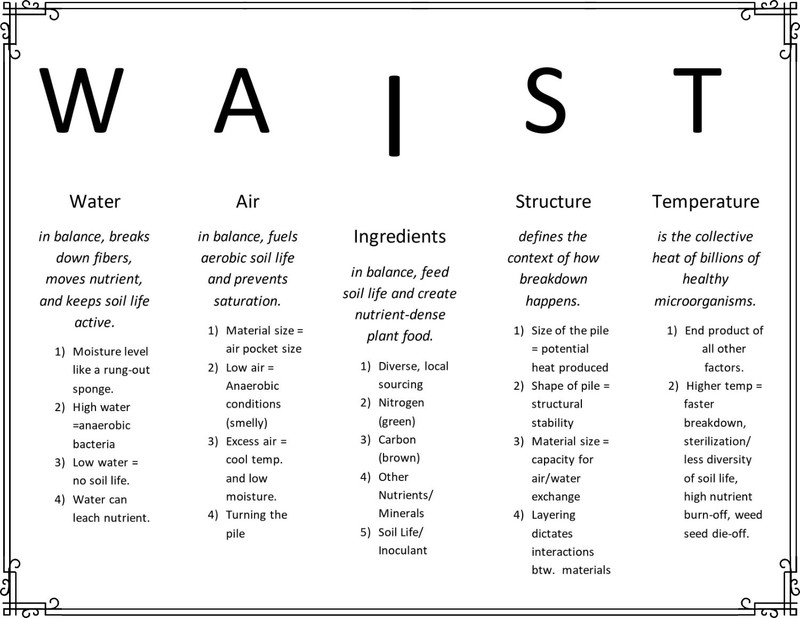To create amazing soil through a compost pile, we each need to balance these natural factors (water, air, structure, temperature) with each other within the pile - and with the ingredients we use. Put differently, all these factors directly relate to the health and diversity of soil microbes - which are the key players in creating an maintaining healthy soils. (So, in a way with compost, we aren't really managing the decomposing matter, as much as we're tending to a whole civilization of bacteria and fungal beings that are doing the work for us!)
Each factor affects the other, and the overall health of the pile. For example, the more water we have in the pile, the less air, the lower the temperature, and the more compacted the structure (generally speaking). We can balance that excess of water by increasing the other factors. We can incorporate more air by turning the pile often. We can increase the porosity of the structure by adding larger materials, or change the ingredients to add slow-composting chunky materials like woodchips. We can even heat the pile up - mechanically or by building the size - so that the excess water is cooked off.
Each element needs to be in balance to have optimal breakdown. So much more to say here! This is simpler than it sounds, and we can do this easily by following an easy tried and true formula.
Simply layer together high carbon and high nitrogen materials to the size of at least 3' by 3', but preferably even bigger. More precisely, you're going for approximately 70% carbon-rich material (straw, chips, etc) and 30% nitrogen rich material (kitchen food waste). Once you've got the hang of this, you can start observing more closely these other elements that affect the composting process. And then manage them to get the perfect compost for your garden!
Enjoy the process,
sincerely,
Justin Michelson |
|
